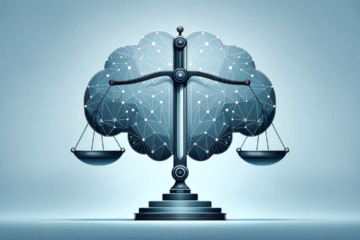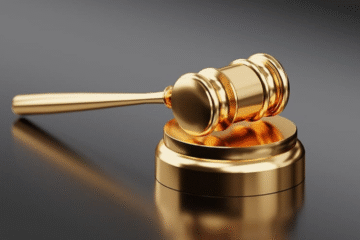
This article is written by Dixita Baishya of University Law College, Gauhati University, an intern under Legal Vidhiya
Abstract
The principle of separation of powers has served as a foundation for modern constitutional governance. Originating from the works of Montesquieu, this doctrine ensures that power is distributed among the legislative, executive, and judicial branches. It establishes a system of checks and balances, preventing the concentration of power and the potential for tyranny. This article explores the historical evolution of the separation of powers, its application in India, relevant case laws, and how it continues to shape constitutional democracies.
Keywords
Separation of powers, executive, legislature, judiciary, checks and balances, Indian Constitution, Montesquieu.
Introduction
The doctrine of separation of powers is a fundamental principle in modern democratic governance that safeguards against the concentration of power within a single entity. It serves as a constitutional safeguard against tyranny, ensuring that each of the three branches of government—the legislature, the executive, and the judiciary—functions independently within its own sphere of authority. This separation is essential for the protection of individual liberties, the promotion of democratic accountability, and the maintenance of the rule of law. Historically, the roots of the separation of powers can be traced back to ancient political philosophy. Thinkers such as Aristotle recognized the necessity of dividing governmental powers to prevent abuse and promote effective governance. However, it was the Enlightenment philosopher Montesquieu who most profoundly articulated this principle in his seminal work, The Spirit of Laws (1748). Montesquieu argued that political liberty could only be secured when power was divided among different governmental bodies, each of which would act as a check on the others. His views were profoundly influential and inspired the framers of several modern constitutions, including the Constitution of the United States and, subsequently, the Indian Constitution.[1] The framers of the Indian Constitution, while drafting it in the context of a newly independent nation, sought to embed the doctrine of separation of powers to ensure that no single branch could dominate the others, thereby upholding democratic governance and protecting citizens’ rights. This approach is reflected in the Constitution’s provisions, which delineate the powers and functions of each branch, creating a system of checks and balances designed to maintain equilibrium among them. Despite its fundamental importance, the separation of powers in India is not always strictly adhered to. The interactions between the executive, legislature, and judiciary can sometimes blur the lines of their respective roles. Instances of judicial activism, executive overreach, and legislative encroachments upon judicial functions raise questions about the practical implementation of this doctrine. Furthermore, contemporary challenges, such as the growing complexity of governance and the expanding scope of governmental powers, necessitate a revaluation of how separation of powers is maintained in practice. This article aims to explore the historical evolution of the separation of powers, its application within the Indian constitutional framework, relevant case laws, and the challenges it faces in contemporary governance. Through this exploration, we can gain a deeper understanding of the significance of this doctrine in preserving the integrity of democratic institutions and ensuring accountability within government structures.
Historical Background of the Doctrine
The separation of powers can be traced back to the writings of ancient philosophers, such as Aristotle, who advocated the need for different government bodies to perform distinct functions. However, it was Montesquieu who, in the 18th century, formalized the idea as we know it today. In The Spirit of Laws (1748), Montesquieu emphasized that the best way to prevent despotism was to ensure that legislative, executive, and judicial functions were divided among separate bodies, each acting as a check on the others.[2] Montesquieu’s interpretation was heavily influenced by the British system of governance, where the monarch (executive), Parliament (legislative), and judiciary functioned separately. His ideas were incorporated into the United States Constitution and later inspired the framers of the Indian Constitution.[3]
Separation of Powers in India
The Indian Constitution, though not explicitly mentioning the doctrine of separation of powers, embodies its spirit in several provisions. Articles 50 and 121 emphasize the independence of the judiciary, thereby ensuring that the executive does not interfere in judicial functions.[4] Similarly, Parliament is entrusted with legislative powers (Articles 79-122), while the executive is responsible for implementing the law (Articles 52-78). The judiciary’s power to interpret the law and review executive and legislative actions is enshrined in Articles 124-147.[5]
Legislature
The legislature is tasked with the creation of laws. In India, the legislative power is vested in the Parliament, which includes the Lok Sabha (House of the People) and the Rajya Sabha (Council of States).[6]The legislature enacts laws, scrutinizes the functioning of the executive, and approves the budget. However, it cannot adjudicate disputes or execute the laws.
Executive
The executive is responsible for the administration of laws and the implementation of policies. In India, the President is the nominal executive, while the Prime Minister and the Council of Ministers hold the real executive power.[7] The executive is answerable to the legislature and is bound by the laws it enacts. However, the executive cannot make laws or adjudicate legal disputes.
Judiciary
The judiciary is entrusted with the interpretation of laws, resolving disputes, and ensuring that both the legislature and the executive operate within the bounds of the Constitution.[8] The independence of the judiciary is a cornerstone of the separation of powers in India. The judiciary has been vested with the power of judicial review, allowing it to invalidate any legislative or executive action that contravenes the Constitution. One landmark case that illustrates the importance of judicial review is Kesavananda Bharati v. State of Kerala (1973). In this case, the Supreme Court established the “basic structure” doctrine, holding that while Parliament has the power to amend the Constitution, it cannot alter its basic structure.[9] This judgment provided a robust check on the amending powers of the legislature and cemented the judiciary’s role as the protector of constitutional supremacy.
Judicial Review and Its Role in India
Judicial review is the power of the judiciary to review the constitutionality of legislative and executive actions. In India, this power is enshrined in Articles 13, 32, and 226 of the Constitution. The Supreme Court and the High Courts have used this power in numerous instances to strike down laws and executive actions that violate constitutional provisions. One landmark case that illustrates the importance of judicial review is Kesavananda Bharati v. State of Kerala (1973). In this case, the Supreme Court established the “basic structure” doctrine, holding that while Parliament has the power to amend the Constitution, it cannot alter its basic structure.[10] This judgment provided a robust check on the amending powers of the legislature and cemented the judiciary’s role as the protector of constitutional supremacy.
Case Laws Demonstrating the Doctrine
Several key cases in India have shaped the interpretation of the separation of powers. In Indira Nehru Gandhi v. Raj Narain (1975), the Supreme Court struck down the 39th Amendment, which sought to remove the power of the judiciary to adjudicate the election of the Prime Minister and the Speaker of the Lok Sabha.[11] The court held that this amendment violated the basic structure of the Constitution, specifically the principle of the separation of powers and judicial review. In Ram Jawaya Kapur v. State of Punjab (1955), the Supreme Court held that the Indian Constitution does not strictly adhere to the separation of powers in the American sense.[12] However, the court recognized that the executive, legislature, and judiciary have their distinct domains, and no branch can usurp the functions of the other. In State of Rajasthan v. Union of India (1977), the Supreme Court reiterated the importance of the separation of powers, stating that while the Constitution does not provide for a strict separation, the demarcation of functions is necessary for the effective functioning of the government.¹³
Checks and Balances: Maintaining Equilibrium
The principle of checks and balances is integral to the doctrine of separation of powers, ensuring that no single branch of government becomes too powerful or acts beyond its constitutional authority. This system is designed to promote accountability, transparency, and responsible governance. Each branch has specific powers that allow it to limit the functions and actions of the other branches, thereby preventing the potential for tyranny and abuse of power. The Legislative Branch’s Role The legislature, primarily responsible for creating laws, exercises its checks through various mechanisms. One of its most significant powers is the ability to conduct oversight over the executive branch. This oversight includes questioning executive officials during parliamentary sessions, demanding reports on executive actions, and conducting investigations into government operations. For instance, the Parliament can summon ministers to explain policies, decisions, and expenditures, thus holding the executive accountable to the people. Additionally, the legislature possesses the power to approve budgets, which effectively controls the funding available to the executive. By exercising the “power of the purse,” the legislature can influence executive policies and priorities, ensuring that the government operates within the fiscal framework established by elected representatives. This function is particularly critical in a democracy, as it links government spending to the will of the people. The Executive Branch’s Checks The executive branch also has mechanisms to check the legislature. For instance, the President of India has the power to summon and prorogue Parliament sessions and can even dissolve the Lok Sabha. More importantly, the President has the authority to veto legislation passed by Parliament, although this veto can be overridden by a two-thirds majority in both Houses. This power is crucial as it allows the executive to prevent potentially harmful or unconstitutional legislation from being enacted. Furthermore, the executive can influence legislative processes through the introduction of bills and policies. The government often uses its majority in Parliament to pass legislation that aligns with its agenda. However, the need for political consensus and public support also constrains the executive’s actions, as unpopular decisions can lead to political backlash or loss of electoral support. The Judiciary’s Oversight The judiciary plays a vital role in the checks and balances system by reviewing the constitutionality of laws and executive actions. Through the power of judicial review, courts can invalidate legislative and executive actions that are found to be unconstitutional. This power was reinforced in landmark cases such as Kesavananda Bharati v. State of Kerala, where the Supreme Court established the “basic structure” doctrine, affirming that certain fundamental principles of the Constitution cannot be altered or destroyed by amendments.[13]Judicial decisions can also compel the executive and legislative branches to act within the confines of the law. For instance, in Maneka Gandhi v. Union of India, the Supreme Court held that the right to life and personal liberty under Article 21 cannot be restricted except by a procedure that is fair, just, and reasonable.[14] This ruling not only curtailed arbitrary executive actions but also emphasized the judiciary’s role in protecting individual rights against potential government overreach. Interaction and Mutual Accountability The interplay between the branches creates a dynamic system where each branch is aware of its limitations and the powers vested in the others. This mutual accountability is essential for maintaining democratic governance. For instance, in the event of a political scandal involving the executive, the legislature can initiate an inquiry, and if necessary, pass a vote of no confidence. Conversely, if the legislature passes a law infringing on constitutional rights, the judiciary can step in to protect those rights. Moreover, the checks and balances system is not static; it evolves based on the political and social context of the country. In times of national crisis or political turmoil, such as during emergencies, the balance of power can shift, leading to tensions between the branches. The judiciary has often acted to reinstate the balance, as seen in cases where it struck down executive orders that overstepped constitutional boundaries.
Challenges to the Doctrine in India
Despite the constitutional safeguards, the doctrine of separation of powers faces several challenges. Judicial overreach, often termed “judicial activism,” has been criticized for encroaching on the functions of the executive and legislature. For example, in Vineet Narain v. Union of India (1997), the Supreme Court issued directions to reform the Central Bureau of Investigation (CBI), which many saw as a direct intervention in the executive’s domain.[15] Similarly, the growing backlog of cases in the judiciary has raised concerns about the effective functioning of the system. There have also been instances where the executive has sought to influence judicial appointments, undermining judicial independence.
Conclusion
The separation of powers remains a critical component of constitutional democracy. While the doctrine ensures that power is not concentrated in any single branch of government, its effective functioning depends on a balance of power and mutual respect among the branches. In India, the judiciary plays a vital role in maintaining this balance through its power of judicial review. However, as governance becomes more complex, the interaction between the branches of government must be carefully monitored to prevent overreach and maintain the integrity of the Constitution.
References
- BASU, D. (2018). Introduction To The Constitution Of India. Lexis Nexis.
- Jain, M. (2018). Indian Constitutional Law. Lexis Nexis.
- MALLYA, N. (2017). Indian Polity And Governance. PHI Learning.
- NOORANI, A. (2000). Constitutional Questions In India: The President, Parliament And Courts. Oxford University Press.
- SATHE, S. (2002). Judicial Activism In India: Transgressing Borders And Enforcing Limits. Oxford University Press.
- SINGVI, L. (1985). The Constitution Of India: A Commentary. Chaitanya Publishing House.
- Kesavananda Bharati v. State of Kerala, (1973) 4 SCC 225.
- Indira Nehru Gandhi v. Raj Narain, AIR 1975 SC 2299.
- Ram Jawaya Kapur v. State of Punjab, AIR 1955 SC 549.
- State of Rajasthan v. Union of India, AIR 1977 SC 1361.
- Maneka Gandhi v. Union of India, AIR 1978 SC 597.
- Vineet Narain v. Union of India, (1997) 1 SCC 226
[1] MONTESQUIEU, The Spirit of Laws, Vol.1,148(Prometheus Books 1989)
[2] MONTESQUIEU, The Spirit of Laws, Vol.1,148(Prometheus Books 1989)
[3] DD. BASU, Introduction to the Constitution of India 25(LexisNexis 2018)
[4] M.P JAIN, Indian Constitutional Law 168 (LexisNexis2018)
[5] S.P . SATHE, Judicial Activism in India: Transgressing Borders And Enforcing Limits 46(Oxford University Press 2002)
[6] N.R MALLYA, Indian Polity and Governance 90(PHI Learning 2017)
[7] L.M SINGHVI, The Constitution of India: A commentary 215(Chaitanya Publishing House 1985)
[8]A.G NOORANI, Constitutional Questions in India: The President, Parliament, and the Courts 180(Oxford University Press 2000)
[9] Kesavananda Bharati v. State of Kerala, (1973) 4 SCC 225
[10] Kesavananda Bharati v. State of Kerala, (1973) 4 SCC 225.
[11] Indira Nehru Gandhi v. Raj Narain, AIR 1975 SC 2299
[12] Ram Jawaya Kapur v. State of Punjab, AIR 1955 SC 549
[13] Kesavananda Bharati v. State of Kerala, (1973) 4 SCC 225
[14] Maneka Gandhi v. Union of India, AIR 1978 SC 597
[15] Vineet Narain v. Union of India, (1997) 1 SCC 226
Disclaimer: The materials provided herein are intended solely for informational purposes. Accessing or using the site or the materials does not establish an attorney-client relationship. The information presented on this site is not to be construed as legal or professional advice, and it should not be relied upon for such purposes or used as a substitute for advice from a licensed attorney in your state. Additionally, the viewpoint presented by the author is personal.




0 Comments